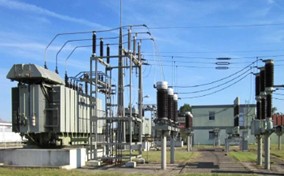How does the 2023 NEC simplify overcurrent protection in interconnected systems?
 Overview
Overview
Overcurrent protection is crucial for maintaining the integrity of power systems, particularly those with interconnected power production sources, to prevent damage and ensure system reliability. In previous NEC versions, Section 705.30 outlined the protection requirements for interconnected systems; however, the ambiguous language regarding transformer protection provisions resulted in confusion and non-compliance with the code. The 2023 revision of the NEC adjusted the provisions for transformer circuit identification and secondary conductor protection to align them with Article 240.21(C), aiming to enhance clarity and conformity to
standards in interconnected systems.
Applying the 2023 Code
Overcurrent protection involves utilizing protective devices like fuses, circuit breakers, or relays to interrupt current flow when it exceeds safe levels. In the context of interconnected electric power production sources, the need for overcurrent protection becomes significantly more critical. These sources, which may encompass renewable energy systems like solar or wind, alongside conventional generators, require protection against overcurrent conditions to maintain system integrity and prevent damage.
In previous versions, NEC Section 705.30 outlined the requirements for providing overcurrent protection to various components of power systems with interconnected electric power producing sources. This encompassed protection requirements for circuits, equipment, power transformers, and generators. Additionally, the section detailed general requirements for the ratings of overcurrent protection devices. The specific requirements for protecting power transformers were already covered in the transformer installation, protection, and safety standards outlined in Articles 240 and 450. This caused confusion regarding which Article should be followed in the case of interconnected systems. To address this ambiguity and improve compliance with NEC standards, the 2023 version revised Section 705.30 to include new requirements for protecting transformer secondary conductors, aligning them with Article 240.21(C) provisions. This adjustment enhances clarity and conformity to NEC standards in identifying transformer circuits and implementing overcurrent protection measures in interconnected systems.
What’s New for the 2023 NEC?
The table below presents a comparison between the 2020 NEC and the 2023 NEC regarding Section 705.30.
2020 NEC |
2023 NEC |
| 705.30 Overcurrent Protection
(A) Circuit and Equipment Power source output circuit conductors and equipment shall be provided with overcurrent protection. Circuits connected to more than one electrical source shall have overcurrent devices located to provide overcurrent protection from all sources. (B) Overcurrent Device Ratings The overcurrent devices in other than generator systems shall be sized to carry not less than 125 percent of the maximum currents as calculated in 705.28(A). The rating or setting of overcurrent devices shall be permitted in accordance with 240.4(B) and (C). Exception: Circuits containing an assembly together with its overcurrent device(s) that is listed for continuous operation at 100 percent of its rating shall be permitted to be utilized at 100 percent of its rating. (C) Power Transformers Transformers with sources on each side shall be provided with overcurrent protection in accordance with 450.3. The primary shall be the side connected to the largest source of available fault current. Secondary protection shall not be required for a transformer secondary that has a current rating not less than the sum of the rated continuous output currents of the power sources connected to that secondary. (D) Generators Generators shall be provided with overcurrent protection in accordance with 445.12. |
705.30 Overcurrent Protection
(A) Circuit and Equipment Power source output conductors and equipment shall be provided with overcurrent protection. Circuits connected to more than one electrical source shall have overcurrent devices located to provide overcurrent protection from all sources. (B) Overcurrent Device Ratings The overcurrent devices in other than generator systems shall be sized to carry not less than 125 percent of the maximum currents as calculated in 705.28(A). The rating or setting of overcurrent devices shall be permitted in accordance with 240.4(B) and (C). Exception: Circuits containing an assembly together with its overcurrent device(s) that is listed for continuous operation at 100 percent of its rating shall be permitted to be utilized at 100 percent of its rating. (C) Marking Equipment containing overcurrent devices supplied from interconnected power sources shall be marked to indicate the presence of all sources. (D) Suitable for Backfeed Fused disconnects, unless otherwise marked, shall be considered suitable for backfeed. Circuit breakers not marked “line” and “load” shall be considered suitable for backfeed. Circuit breakers marked “line” and “load” shall be considered suitable for backfeed or reverse current if specifically rated. (E) Fastening Listed plug-in-type circuit breakers backfed from electric power sources that are listed and identified as interactive shall be permitted to omit the additional fastener normally required by 408.36(D) for such applications. (F) Transformers The following apply to the installation of transformers: (1) For the purpose of overcurrent protection, the primary side of transformers with sources on each side shall be the side connected to the largest source of available fault current. (2) Transformer secondary conductors shall be protected in accordance with 240.21 (C). |
